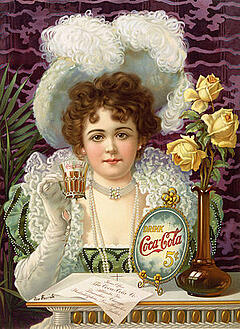Back to Advertising Basics
Since we have been having conversations about large businesses taking over social media as an advertising platform, I think it’s time to back up a bit and consider the basics of advertising.
What is advertising? Advertising is a way to persuade a targeted group to do something in regard to ideas, services or products. It can take many different communications forms. The purpose is to drive the targeted group into behaving in a certain way. Advertising can be about buying products, but also about things like selecting a political side and voting. The driving force pays for the advertising and places it in mass media settings, including but not limited to television commercials, direct mail, magazine, newspapers, bill boards and, of course, social media websites, email and text messages.
What are the different kinds of advertisers? The commercial advertisers want increased sales or more people seeking their service as opposed to someone else’s service. For this reason they select a brand and bombard the targeted group of consumers with many repetitions of their brand. Non-commercial advertisers spend their marketing dollars advertising things other than products, including such non-material things as political parties, religious groups, interest groups, government agencies. Nonprofit advertisers often rely on free means to advertise, like public service announcements.
Modern advertisement is an outgrowth of mass production, which started in the late 19th and early 20th centuries. By 2010 advertising spending was estimated at greater than $300 billion in the United States.
What is the marketing mix and what is its relationship to advertising? A key concept to advertising is the marketing mix, discussed in the 1960s by Professor E. Jerome McCarthy. He proposed that the marketing mix consists of four elements, called the four Ps. The first P was for the actual product. Price was determined by the value of the product. Third was place, which was getting the product to the consumers. Promotion was the last P and means the process of targeting the market and convincing them to buy.
Let me count the ways: There are more sorts of media for commercial marketing than most people consider. Places like walls, billboards, street furniture, flyers, radio/television advertisements, smart phones, shopping carts, web popups, human billboards, sides of busses, people’s vehicles, things inside of jets on the in-flight magazines, seatback trays, storage gins, taxis, subway platforms, trains, the elastic bands of disposable diapers, branded items seen on television shows or in movies, how items are stacked in stores, ads on the air in stores, ads on grocery bags, supermarket receipt backs and on and on. Any place that a seller pays to place their message is advertising.
So if advertising is already everywhere, is it wrong to place it on social media? Tell us what you think in the comment box below.
Jaco Grobbelaar, owner of BroadVision Marketing, helps business owners and business professionals put marketing strategies in place that consistently secure new clients. He can be reached at jaco@broadvisionmarketing.com or 707.799.1238. You can “Like” him at www.facebook.com/broadvisionmarketing or connect with him on www.linkedin.com/in/JacoGrobbelaar.
Share this
Previous story
← Tips for Planning a Successful DayYou May Also Like
These Related Stories
Media and Advertising over the Internet


Media and Advertising over the Internet
Thu, Sep 29, 2011 @ 09:36 PM
3
min read
The Secret Language of Advertising Claims


The Secret Language of Advertising Claims
Mon, Oct 10, 2011 @ 12:57 AM
4
min read
Addicted to ads: Part 3 of a three-part discussion


Addicted to ads: Part 3 of a three-part discussion
Thu, Oct 06, 2011 @ 09:53 PM
4
min read




No Comments Yet
Let us know what you think